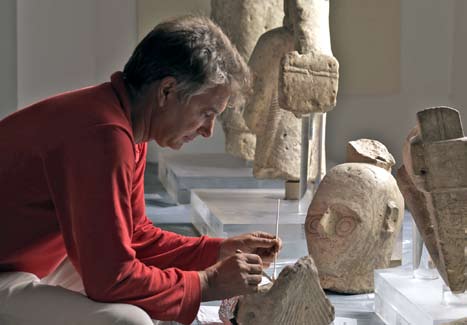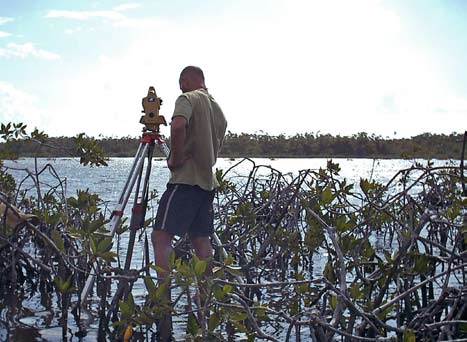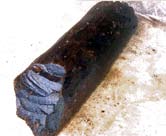September 1, 2010



The 2010/2011 Lecture Program starts in September! Over the course of the year, this vital AIA program will provide nearly 300 free public lectures by 90 archaeologists and other scholars to AIA Societies in the U.S. and Canada. The lecturers—all experts in their fields—will discuss their most recent excavations and research at sites around the world.
Who lectures for the AIA? Many of our speakers are field archaeologists, who tell of their latest discoveries. But one of the more intriguing lecturers this year is Roberto Nardi. In 1982, Nardi founded the Centro di Conservazione Archaeologica (CCA), a private company carrying out public commissions on the conservation of ancient monuments and archaeological sites. Since then he has directed more than 50 projects and training courses in 14 countries. According to Nardi, “conservation in archaeology is a practice that is undergoing a continuous evolution, both in principles and in techniques.” In 2010, as an AIA Kress Lecturer, Nardi will speak on this subject and share his site conservation experiences with audiences at a dozen AIA Societies across the United States. Nardi will discuss his work at the Roman city of Zeugma in Turkey (whose extraordinary mosaics and other structures were threatened by the rising waters of the Euphrates), on the prehistoric sculptures of Monte Prama in Sardinia, and on the painstaking conservation of the Justinian mosaic of the Transfiguration in the Monastery of St. Catherine, Sinai.
The Samuel H. Kress Lectureship in Ancient Art enables the AIA to invite foreign scholars each year, bringing their work and viewpoints to North American audiences.
Visit www.archaeological.org/lectures for a full listing of the 2010/2011 Lecture Program, and contact your local AIA Society or call 617-358-4184 (lectures@aia.bu.edu) for more information about events near you.
The AIA website (www.archaeological.org) has an exciting new look and feel. Vivid images and streamlined navigation make it even easier to learn about the Institute’s initiatives, become a member, join a local society, search for an event near you, and discover fieldwork opportunities. You can read about our latest Site Preservation projects, or access lesson-plans for educators and homeschoolers. The redesigned site has more interactive features and includes a blog that will give you the opportunity to join in the conversation. Also, connect with the AIA on Facebook and Twitter. Enjoy the site and visit us often.
Like all other AIA programs, the website redesign was made possible by your generous donations. Go online and explore the many ways you can continue to support the AIA, our mission, and our goals.
The Archaeological Institute of America is supporting the preservation of the only known wooden structures from the Classic Maya period (AD 250-900). Paynes Creek National Park in Belize will benefit from a $25,000 Site Preservation Grant. The grant awarded to Louisiana State University professor Heather McKillop will fund the protection of the submerged wooden structures and make information about them available to area residents and tourists.
Generally, wood and other organic materials from this period do not survive in the hot and humid conditions prevalent in much of the Maya region; however, the waterlogged environment at Paynes Creek created unique preservation conditions, giving us a rare glimpse of how the ancient Maya used timber.
With the three-year grant from the AIA, McKillop will construct an observation platform in Paynes Creek National Park. Visitors will be able to view the underwater archaeological site through a window in the platform without impacting the fragile remains at the site. Additionally, McKillop plans to raise awareness of the site by hosting a series of workshops and talks in the region in conjunction with an exhibit and a website for archaeological tourism with educational information for schools, tour guides, and the public.
Maya archaeologist and AIA Director of Programs Ben Thomas believes “this project will have a tremendous impact on the local population where many descendants of the ancient Maya reside today and on visitors who come to the area. It will be great for people to see the wooden artifacts created by the ancestors of the local inhabitants— raising awareness is critical for the protection of the site.”
The funds used to support this project were raised through the AIA Site Preservation Program’s pledge drive launched at AIA’s 2nd Annual Gala in New York City. The money raised was used to fund projects at Paynes Creek in Belize and Umm el-Jimal in Jordan. Look for more details on Umm el-Jimal in the next issue of Dispatches.
The AIA Site Preservation Program emphasizes outreach, education, and the spread of best practices in site preservation. The Institute also supports preservation projects in the United States, Jordan, Peru, Cambodia, Cyprus, Chile, and Turkey. The program is made possible through donations to the AIA. To learn more, please visit www.archaeological. org/sitepreservation.
Anyone curious about archaeology and what archaeologists do should attend an AIA Archaeology Fair. Our Fairs present the work of archaeologists, museums, historical associations, and others who work with ancient materials as interactive activities and programs suitable for people of all ages and interest levels.
The AIA and Museum of Science in Boston will be hosting the Fourth Annual AIA-MOS Archaeology Fair at the Museum of Science on October 15 and 16, 2010. This year’s theme is ancient technology and attendees will have the opportunity to participate in interactive activities, watch live demonstrations, and talk to experts about ancient technology. Last year more than 5,000 people,including 2,000 students, teachers, and chaperones, attended the event and learned about topics ranging from underwater excavation and 3-D modeling of ancient remains to making colonial-era dolls and Roman mosaics. Join us for what will be an exciting exploration into the past.
We are also planning our 11th Annual Archaeology Fair in conjunction with AIA’s 112th Annual Meeting in San Antonio, Texas. The fair will be held at the Witte Museum on January 7 and 8. Come join us!